When disaster strikes, the first instinct for many is to run — grab your bug-out bag, hit the road, and disappear into the woods. But what if leaving and bugging out is actually the worst move you could make? The truth is, bugging out should be your last resort, not your first response. For most people, staying put — bugging in — offers a far better shot at survival. Why abandon the place where you’ve spent months, maybe years, prepping?
Your food, water, tools, shelter, and even your security systems are all right there. Once you hit the road, you’re exposed, vulnerable, and at the mercy of the chaos outside. Let’s break down the top reasons why bugging in beats bugging out, and how to fortify your home into a true safe haven when things go south. Before you flee, read this — it might just change your survival strategy forever.
Is Bugging In Safer than Bugging Out?
That doesn’t mean bugging outshould always be ruled out. In certain scenarios, it may be the only reasonable course of action. For example, if a hazardous material incident occurs and a thick cloud of poisonous fumes is heading straight for your home, remaining in place could be a fatal mistake. The same applies if your area is engulfed in flames, or if tensions of nuclear conflict are escalating and you happen to live within sight of a military submarine installation.
There will be moments — and they’ll be obvious when they happen — where leaving is the most logical choice to protect your life. However, in the majority of emergencies, sheltering in place often proves to be the more practical and strategic option. Here’s a breakdown of why staying put might give you a better shot at making it through the worst.
Access to Gear & Supplies
Let’s face it — you can’t carry your entire prepper stockpile on your back. Whether it’s gallons of water, canned goods, first aid kits, or solar panels, most of your critical gear is stored at home. Bugging out limits you to what you can haul, and even with a vehicle, you’re constrained by fuel, space, and mobility.
Staying home means you keep access to tools, weapons, and medical items that could mean the difference between life and death. Running out of antibiotics, clean water, or power sources while on the road can cripple your chances. When you bug in, you’re surrounded by your resources — the very ones you’ve spent months or years collecting.

You Control The Territory
Your home is more than just a shelter. It’s your stronghold. You’ve spent time fortifying it, customizing your defenses, storing supplies, and planning escape routes. You know every corner, every creak, every potential vulnerability. That level of familiarity can’t be replicated in the wild or in a temporary location. Staying put gives you the upper hand: you know where the tools are, where you’ve stashed extra food, how the terrain behaves during storms or blackouts.
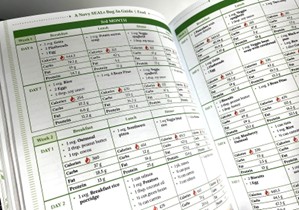 Leaving all of that behind to face uncertainty is a gamble. In a crisis, control is everything — and when you bug in, the battlefield is one you’ve prepared. Why surrender that advantage?
Leaving all of that behind to face uncertainty is a gamble. In a crisis, control is everything — and when you bug in, the battlefield is one you’ve prepared. Why surrender that advantage?
Former Navy SEAL Joel Lambert knows exactly what it takes to defend and secure your home when everything goes south. After facing countless threats in the field, he’s packed years of experience into one powerful survival manual.
In this step-by-step guide, Joel shows you how to protect your home, your family, and your life when SHTF. Here’s just a glimpse of what you’ll learn:
-
How to make your property looter-proof
-
How to use silent alarms and traps
-
The first thing to do if martial law is declared
-
Clever tactics to outsmart FEMA in the next crisis
-
How to stay completely off the government’s radar
You’ll also discover how to build a 3-month food stockpile, how to communicate during a blackout, and the must-have survival items every home should include. This is more than just a book. But there’s a catch: only a limited number of copies were printed. If you want in, you’ll need to move fast.
👉 Here is Joel’s personal discount link – get 68% OFF. Grab it before it’s gone!
Easier to Care for Pets and Livestock
For many preppers, animals aren’t just companions — they’re part of the survival plan. Chickens provide eggs, goats give milk, and dogs offer security. Bugging out makes caring for them nearly impossible.
Transporting livestock is a logistical nightmare, and even traveling with pets is tough when resources are scarce. Bugging in allows you to maintain your homestead rhythm: feeding routines, shelter, and veterinary care.
Your animals know the space, and you have what you need to care for them. Leaving them behind isn’t just heartbreaking — it could mean losing a vital part of your food and defense system.
Related: Your Bug Out Bag Might Actually Be Useless
Safer for Your Family
If you’ve got young kids, elderly parents, or someone with a disability, bugging out becomes a logistical nightmare. Long treks, exposure to the elements, and chaotic environments can quickly overwhelm vulnerable family members. Staying put means stability: a roof overhead, beds to sleep in, and controlled temperatures.
You can continue routines, administer medications, and protect your loved ones in a secure setting. In contrast, being on the move introduces constant dangers — from hostile encounters to accidents or illness without proper care. Your home is a shield, and when your family is at its most vulnerable, it’s where they’re safest.
Energy Efficiency
You’ve probably invested in energy solutions for your home: solar panels, propane systems, backup generators, EMP Cloth, maybe even a wind turbine. These setups are designed to keep you powered up when the grid goes down. Bugging out strips you of that infrastructure.
You’re reduced to batteries, car inverters, or scavenging — and those don’t last long. When you stay home, you can harness sustainable power, run water filtration systems, and cook without relying on campfires or risky, improvised methods. Energy is life in a crisis. Why give up the systems you’ve built when staying put means keeping the lights on?
Related: Hidden Signs Your Neighbor is a…
Food Production Can Continue
If you’ve invested in self-reliance, you probably have a garden, greenhouse, or even a food forest. Staying home means you can keep growing and harvesting food while others are scavenging or starving. When bugging out, you leave behind months (or years) of work. Seeds don’t grow on the move, and foraging is unpredictable at best.
At home, your soil is prepped, your tools are ready, and your knowledge of the microclimate gives you a huge edge. You’re not just surviving — you’re producing. That’s real long-term sustainability in a crisis. Why abandon it when your food security is right outside your door?
 If you’re interested in growing all the food you need and becoming completely independent from the grid, you can learn everything from scratch—even with no prior experience.
If you’re interested in growing all the food you need and becoming completely independent from the grid, you can learn everything from scratch—even with no prior experience.
Ron and Johanna Melchiore have spent 43 years mastering off-grid homesteading. Their lifetime of knowledge is packed into one powerful resource: The Self-Sufficient Backyard.
This guide teaches you how to turn any piece of land into a productive, self-reliant garden. Whether you’re just starting out or looking to level up your homestead, this is where real self-sufficiency begins.
Can You Also Make it In The Wilderness?
At the same time, if you ever find yourself forced to bug out—especially into the wilderness—you need to be truly prepared to handle it. That’s where the Wilderness Long-Term Survival Guide by Dr. Nicole Apelian comes in.
This guide is packed with practical, field-tested knowledge to help you survive when the crisis hits and you’re far from home. Inside, you’ll discover:
-
How and where to set up traps for small game
-
Wilderness fishing techniques
-
How to tap trees for water and nutrients
-
How to preserve food in the wild
-
How to cultivate land and grow food off-grid
🧈 If you’re curious about how people truly survive long-term in the wild, this guide is a goldmine!
What About Water?
Besides food, you’ll also need water to survive. Especially when a crisis catches you off guard, bugging in remains the smartest option when it comes to securing water. Out in the wild, you need serious skills—and a whole lot of luck—just to find enough water to stay alive.
At home, the danger is different. You’re fully dependent on the public water supply. Truth be told, if you depend solely on the public water grid, you’re gambling with your survival. When disaster hits, your tap could dry up in hours… and without water, your body, your mind, and your odds of survival will fail just as fast.
But here’s the thing—there’s a far simpler solution than chasing puddles through the wilderness. And you can use it even if you’ve stocked up on bottled water… because let’s face it, those supplies will run out eventually.
We’re talking about this breakthrough device that can extract up to 10 gallons of clean water per day—straight from dry desert air. No well, no stream, and no plumbing required. In an age where access to water is life or death, this off-grid water generator could be your best shot at staying alive.
Final Thoughts
Every prepper needs to be ready to evacuate if the situation demands it—but in many cases, staying put is the wiser choice. Remaining at home offers greater safety, long-term sustainability, and full access to your supplies. While it’s essential to have a fallback location planned, choosing to stay should be your first option when conditions allow. Leaving should be a last resort.
Sheltering in place gives you the advantage of familiarity, control, and security. You know the layout of your home, your defensive setup, and where everything is stored. On the other hand, bugging out means facing unpredictable dangers, limited resources, and potential chaos. Be equipped for both scenarios—but when it’s possible, hold your ground and protect what’s yours.
You may also like:
11 Fatal Mistakes To Avoid When Bugging Out
How To Charge Your Phone When There Is No Electricity (Video)
Never Do This When You Leave Your Property

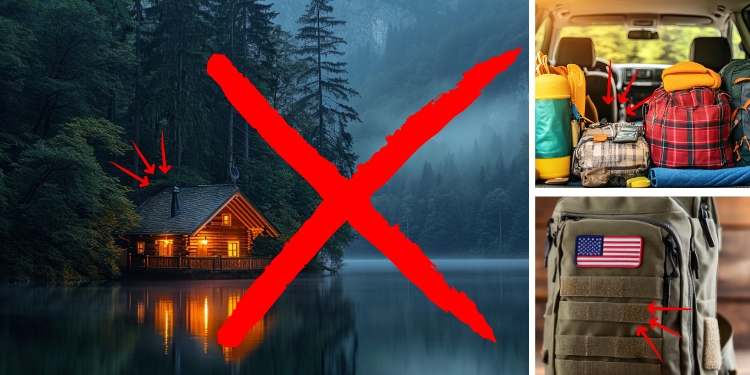
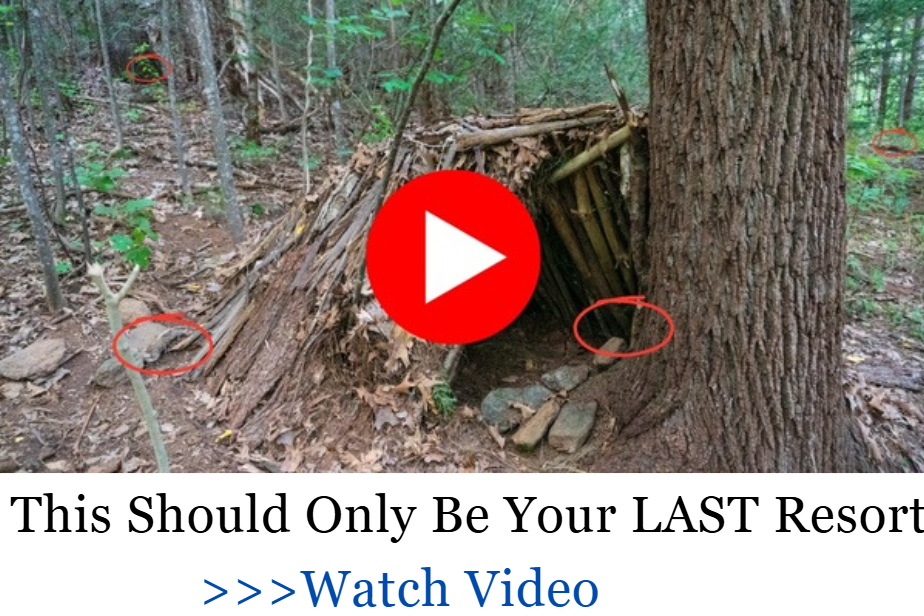








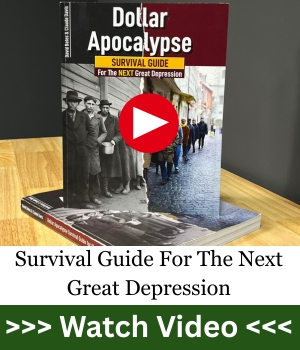



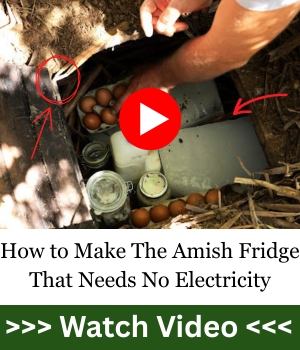

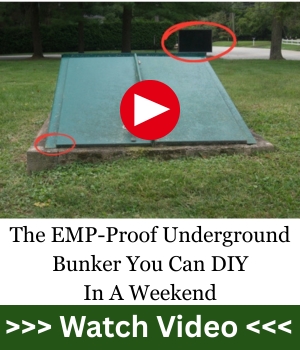






If you dont bug out then you must pe prepared
Either to stand your gound or fight thru it or have enough barriers in place so you can withstand the gangs, groups, clusters of stupid or just idiots who roam to get what they can and create victims of circumstance
Preying on the week , unsuspecting , or just wrong place , wrong time .
Character of the stupid come s out
so
what will it be ?
if you do bug out , then you must be prepared :
Never Alone , Never by yourself , Never with out a Plan
Groups , large numbers of those you can trust and have the same Mindset
Bird s of a feather Flock Together , if not then koas, calimaty or just outright anarchy
This is Why YOU must know Your bible, Know ten commandments , have the right relationship to God , Knowing there is a consequence for Evil and Wrong actions .
As I read through your article, I realized your primary purpose was to sell information. But before I got to that realization, it occurred to me that there is a bug-out, so to speak, that is rarely spoken about, which is, or can be, vacating your death trap (I’m referring to modern USA built homes of the last 75+ years with hollow exterior walls that bullets easily penetrate (that is how the majority of USA homes are built) for a new home with real stone (not fake stone) or solid brick homes. I keep wondering in my 85y/o Balloon-built home (meaning the exterior beams of my 2-story are 20-feet long with no cross-wood to support beams, such as where the upstairs floor could attach. Modern homes are built level by level, like stacking, whereas older homes built the frame first and often did not use lateral wood cuts to hold frame boards in place; and this is partly whey they burn-down so fast when electrical fires start in hollow walls. It used to be in my area that every year someone would be shot by a stray bullet, while sleeping in their bed–the bullet would penetrate the outer wood sheathing, the inner-wood drywall, and fly through the first room until it his something; and often it would be a child. Despite that many people lack the funds to re-side their exterior walls, with stone, brick, or even extra wood, doing so would go a long way to strengthening a bug-in fortress. The better alternative might be to relocate to buy a stronger fortress, or even to build a new home (maybe smaller to save costs), but beef up the exterior stopping power for bullets, fire, hail, tornadoes, etc.
In my area every home has basements. That is good, but in older “grand-fathered” homes (meaning I do not have to add an exterior escape hatch to my basement in the event of fire, (and should I use the basement as living space–in this case the basement can be a trap, with only one entry and exit stairway to an inside doorway). At the same time “line of sight is greatly diminished”, even though it is the safest place to be in a tornado. There are many exceptions, but a major one rarely considered.
Here is another example, where a plan to Bug-In FAILS, AND WILL FORCE A BUG-OUT, like it or not. My home is on an end block; and is downhill on the East, South, and West. My sewer and plumbing is underground around my basement. My water entry is in the basement (with a shut-off valve for the whole house, as needed for plumbing repair), but SO IS MY SEWER LINE, AND I EXPECT THAT THE SEWER LINE IS ABOUT SIX FEET MINIMUM BELOW GROUND LEVEL. MY HOME INTERIOR (in the basement) LACKS SEWER-CLOSE-OFF CAPS to prevent backed up sewage from entering my living space. Many homes lack close-off caps in sewage piping to prevent sewage and flooding water that could enter via sewage pipes (especially in older homes where sewage caps were not part of a building code). So my home is in a gentle “hollow” with hills and whole neighborhoods (at least 1,000 houses) are at a higher elevation than my home. That means that in a protracted electrical outage, when city pumps don’t work to suck sewage through the pipes, the sewage will drain down to the lowest place and back-up from there. Literally, I could have my whole basement filled with pee and poop, which would force a bug-out (even to the backyard, however being so close to a health hazard in my basement, I would want to bug-out of my neighborhood and would be forced to. There are millions of homes in this same predicament. If you plan to bug in, and live downhill from other neighborhoods, or in a low “flood zone”–get a plumber to install sewage caps in your home OR YOU WILL NOT HAVE THE CHOICE TO BUG IN in a major disaster. In my house (with basement) I have one major sewage pipe going to the street, but I also have a gravity drain in the basement floor; I also have my water supply in a pit under basement concrete that could be affected. I also have a laundry pipe to discharge laundry water about 4 feet above a basement floor; and maybe I got more places I do not know of that could become contaminated (even piping at water heater in the basement). SO HERE IS MY POINT–ALL OLDER HOMES DOWNHILL FROM NEIGHBORHOODS WILL BE FORCED TO BUG OUT (to backyard or an altogether different unplanned location). So, while you are thinking IT WON’T HAPPEN TO YOU, because your house is 65 years old and it has never happened before–START PREPARING FOR BUGGING OUT, while you are ignoring the plumber’s bill of installing sewage caps on all piping pathways into your lowest levels of your home. THIS IS NOT A “SHIT HIT THE FAN” (SHTF) speech, this is Shit and pee filling up your basement, and/or flooding the low ground (potentially) under your mobile home…whatever. You will be bugging out indefinitely, because your immediate threat in a major power outage is your basement, crawl space, maybe even your whole yard. And if you are storing all your bug-in/out gear in your basement, you will be (if the worst of the worst happens) in “deep shit”.
Can we get a $1,discount on your book like Joe gives on his? You have bviously know everything.
Tests show that any high velocity rifle round bigger than 5.56 will easily penetrate brick or stone walls, cutting through stone and wooden framing, penetrating the interior walls and often maintaining enough energy to exit the exterior wall. One poster here has 8″ concrete walls, a well constructed steel reinforced 8″ concrete wall may or may not stop a .50 cal round, they have penetrated 12″ walls in tests. Very important to remember that a house offers concealment but not cover. Reminds me of accounts from TR’s Rough Riders in Cuba, they were used to fighting with their lever action rifles and were shocked that large tree trunks were easily penetrated by the Spanish 8mm bolt action Mausers.
If you are remodeling inside or redoing the exterior you can pull this one off. There is a lot of air in between your studs. Fill them up with paper.
Warning: this takes LOTS of paper. Bundle up magazines, news papers, even your monthly bills.
Wrap rubber bands around the same size bundles.
Make the bundles short enough to put up next to the studs without bulging over.
Next, stack the bundles next to each other to fill in the 18″ between studs.
Start from the bottom and make a rows in between the studs.
Making the rows fit together will feel like you are putting a jigsaw puzzle together.
Place a band over the bundles to keep them in place.
Get a can (lots of them) of spray in foam insulation.
Spray in between the bundles to hold them in place.
Don’t spray behind the bundles because this stuff expands and your bundles could end up bulging.
When the foam is dry and the bundles are firmly in place remove the bands.
Start on the next row.
Repeat these steps until you have filled up one section.
Move to the next section and repeat the process.
After filling in all the sections Cover this all up with your exterior wrap, sheet rock, paneling, etc… In our case it was concrete log siding.
A 45 ACP bullet fired from 2 feet away went straight through the siding. The next round was fired at the siding with a bundle behind it. The bullet lodged half way through the paper and was mangled. A shot could still get through one of the foam “cracks” but the odds are in your favor.
This also makes your house burn more slowly because of all the thick bundles of paper.
Good luck.
Sorry, I was just told that the studs were 16″ apart.
***Make sure you make a small “block” around electrical sockets!
These are all very good valid points, and I will add one more. The legal situation. If you are put into the situation of having to kill someone because they were a threat in your own home you can justify it and be ok in the court system. Kill someone out on the road and the state will be after you. Kill someone in a national park and the federal courts will be all over you. You may never see the light of day.
Great point! You’re absolutely right to bring up the legal side of survival.
In a crisis or collapse scenario, many preppers focus on food, water, and defense, but few think through the post-event legal consequences of their actions. As you said, where and how an encounter happens can drastically change the legal outcome, even if your intentions were defensive.
Self-defense laws vary not only by state but also by jurisdiction, what might be considered justified in your own home under “Castle Doctrine” could be charged as manslaughter or worse if it happens on public land or while traveling. In National Parks, you’re dealing with federal law, which comes with stricter enforcement and less leeway for local interpretation.
Even in a collapse, if some form of government or legal system survives or returns, your actions during the chaos could be judged afterward. That’s why having a well-thought-out bug-in or bug-out legal strategy is crucial. Knowing your local laws, documenting your actions if possible, and staying out of avoidable conflicts could mean the difference between freedom and prosecution, even in a post-crisis world.
Thanks for bringing up this critical layer of preparedness. Situational awareness includes not just threats from people or nature, but also from the systems that may come back online when it’s all said and done.
This is radar again. I’ve decided I need to prepare my new bug-out location right away, because there are too many people west, south, and east of me; and even if I added sewage caps to all sewage access locations in my house (basement), very few other people uphill from me will not be adding sewage caps; and when their basements overflow, it will all be heading in my direction–downhill. It won’t be a healthy place to live anymore. And, it might be best if whole neighborhoods were burnt down (to kill the microbes spilling out of sewage pipes—that is what the mility does in the field, that catch stinky-stuff in big barrels and pour fuel on it and burn the contaminants on days when the wind is not “aimed” at the camp.
Since I forgot about the mechanics of this threat, when thinking of only my house and not the whole neighborhood uphill from me, I thought I would be safe enough in a bug-in situation. The devil is always in the details…not just me, but also my neighborhood (in the sewage issue raised above). Thank God I don’t have a high-rise Apartment Building uphill from me.
You’re absolutely right. The devil is in the details. Many people think about their personal preparedness plans in isolation, but your point underscores how essential it is to consider the broader environmental and infrastructural context, especially in a densely populated or downhill location.
Sewage backflow during a grid-down or disaster situation is a real and under-discussed threat. Even if you cap your own system, if neighbors uphill haven’t taken the same precautions, gravity and water pressure will do their thing. It’s a sobering reminder that individual prepping has its limits when surrounded by unprepared infrastructure.
Your idea of preparing your bug-out location sooner than later makes a lot of sense, especially if you’re anticipating sanitation failures and microbial hazards that could make bugging-in untenable. The military’s approach to biohazard waste (burning waste in controlled settings) isn’t ideal for civilians, but it illustrates how seriously they take contamination in crisis zones.
This is also why community preparedness, or at least awareness, is crucial. If neighbors can coordinate basic prevention like backflow valves or at least understand the risk, the outcome for everyone improves. But that’s not always realistic, and it sounds like you’ve assessed your surroundings pretty thoroughly.
Thanks for sharing your thinking so clearly, your situation is a real-world example of why prepping must go beyond just “stocking up” and include environmental, infrastructural, and even geographic analysis. Good luck setting up your new bug-out location. You’re taking the right steps.
And then there are the people who will regulate the crap out of your property in the name of the environment…good luck keeping up with that B.S. when you are forced to retire…and the goody two-shoes are in power….if the goody 2 shoes would like to help pay for my up grade ‘s no problem .Just invent another virus to kill the older people off . Shooting people hell…what about the open border…medical mandates…..bat shit crazy religious hamas zombies who want atom bombs….Ya..we have some work to do
Me and my family are staying home.
As the article says, everything is there food, water, tools, bed, everything.
The road is the the last resort.
A few people have already brought this up and that is how houses are built. Our walls are 8 inch thick concrete. We firred out the exterior for siding and the interior for plumbing and electrical, Sheetrock etc.
Windows are all 36 inches from the floor. The ceiling is tongue and groove with channeling above that and the steel decking. Than 8 inches of concrete. Coating, wrapped and a membrane then dirt and grass. We built an 1100 square foot house so we could afford to do it.we also have access to the root cellar from inside the house. The windows have the 3M film on them. 4 feet and below the Sheetrock is the bullet proof stuff but only 1 layer as that is what we could afford.
We are off grid and live remotely. With Starlink we have no idea when the power is out. Power lines stop 3 miles from us. We are 35 miles outside of a town of 1100. 2.4M acres of Natl and state forest surround us. We aren’t going anywhere….
It sounds like you’ve built an incredibly well-thought-out and resilient homestead, truly impressive. Your attention to structural integrity, defensive design, and self-sufficiency is the kind of preparation most people only dream about. Reinforced concrete, bullet-resistant materials, underground access, and off-grid capabilities show a level of foresight and commitment that’s rare. You’re not just surviving; you’re positioned to thrive under pressure, and that’s something to be proud of.
Your setup underscores a key truth that many overlook: true preparedness isn’t just about gear or bug-out bags, it’s about infrastructure and location. By investing in a secure, remote, and self-reliant home, you’ve made the kind of long-term commitment that provides real peace of mind. In a crisis, mobility is uncertain and resources are limited, but a well-defended, sustainable homestead like yours offers both security and stability. Staying put, when you’re already in the right place, is often the most strategic move of all.
the thing is when people say ” i’m going to bug out ” my first thought is ” to where? ”
very few people in this world could live off of the land even for a few days. and you just can’t just run off into the woods because others who own it will not take kindy to trespassers, national parks will be full of others like you and resources would quickly run out. if you have a BOL, will others beat you there and take it over? if so they will not easily give it up.
stock up on food and water because the lack of potable water is going to thin out many people in 7-14 days in populated areas i fear. from lack of, to drinking contaminated water
i live in a good very rural community, good neighbors, good water and the ability to farm acreage.
think about where you’ll go before before you head out, drive it first, back roads and side roads because you may only get one shot at it and you may not be able to return home
the best BOL is the one you already live in. don’t come to our area because you won’t stay.
You make several excellent and sobering points that often get overlooked in the popularized idea of “bugging out.” The notion that one can simply grab a bag and disappear into the wilderness is more fantasy than reality for most people. Living off the land is extremely difficult without training, experience, and the right environment, and as you rightly pointed out, land is usually owned, and public lands will be overwhelmed. Even having a pre-arranged bug-out location (BOL) doesn’t guarantee safety if it’s unoccupied and unsecured; others may find it first, and conflict in such high-stress scenarios could be deadly.
Your advice to prioritize where you live now, building relationships, securing water, and growing food, is probably the most realistic and sustainable approach for most people. If you’re already in a rural, self-reliant community, you’ve got a major advantage. Those in urban or suburban areas should be thinking seriously not just about evacuation routes, but also about relocation before a crisis hits if they want a viable long-term plan. Bugging in, when feasible, paired with solid preparations and local cooperation, may indeed be the best BOL anyone could ask for.
Bugging in may not be the best bet if you live in a large city, as we do. Criminals are barely held in check now by the thin blue line. After an EMP or CMP or any kind of uprising they won’t be around long but will stay home to protect their kin. Eventually gangs will be large enough and will take from you all that they want including your life. Yes, you will stop some, but large groups are hard to defeat especially when attacked from several sides. Rember the Alamo or Bunker Hill, we had the British defeated and would have won but ran out of ammo and had to leave the field. If 25 people or more attack your home and each has an AR with 30 round mags that is a lot of rounds going down range. Even if they don’t score a hit on you or any of your people, it will keep you down for some to advance. Even if you are down and think you’re out of the way a ricochet can do a lot of harm. This is just my way of thinking having had to defend hamlets, until superior air power saved us.
We have invested in land far away from the city, have built over time shelter, nothing fancy but livable, have ponds, a stream, timber and airable land. Invest in older equipment, I have a 1968 case backhoe, a 1954 ford tractor and a 1979 Jeep, all were purchased at a very reasonable price, but it took awhile, as all prepping does and is ongoing, like praying, you should never stop.
Along the route to take to the property I have buried small caches 5-gallon buckets about every 8 to 10 miles, at night over a period of time, in case we need to walk, easily found by mile markers and 50′ off the ROW. Will walk the fields and woods parallel to the road. Don’t plan on using them but I don’t have to hike with extra weight. Just water sealed bottles and pemmican vacuum sealed.
Will the hordes of the city reach us, maybe but there will be less of them, and I think my chances are better in the country.
Pray I never have to use any and can leave the preps to the next of kin.
You make a strong and realistic point, urban areas do present serious risks in a collapse scenario, especially with limited law enforcement and the high likelihood of organized criminal groups taking control. Your comparison to historical battles is apt: even well-prepared defenders can be overwhelmed by numbers and sustained assault. It’s smart to recognize that bugging in may not be viable for everyone, particularly in dense cities where escape routes and defensible positions are limited. Situational awareness and adaptability are key.
Your long-term approach to building a rural bug-out location, investing in older equipment, and preparing hidden caches along your route is exactly the kind of forward-thinking strategy more people should consider. Prepping isn’t just about gear, it’s about mindset, planning, and persistence over time. Whether the threat reaches your retreat or not, having layered plans and fallback options puts you well ahead. Like you said, hopefully it’s never needed, but better to have it and not use it than the other way around.